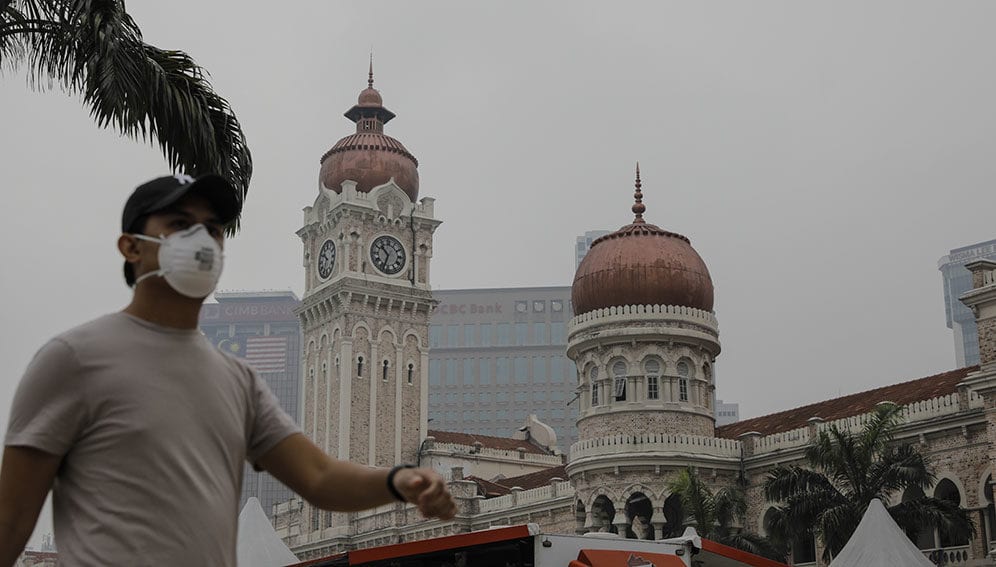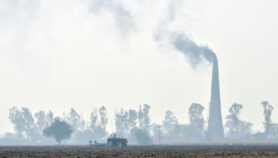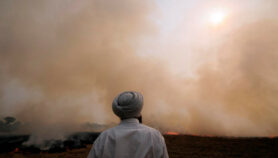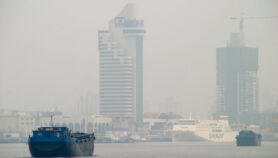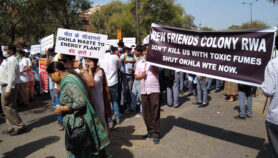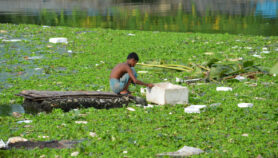By: Nadiah Rosli
Send to a friend
The details you provide on this page will not be used to send unsolicited email, and will not be sold to a 3rd party. See privacy policy.
[KUALA LUMPUR] Some 10 million children in Indonesia and Malaysia are at risk from the air pollution caused by haze emanating from forest fires raging since June on Indonesia’s Sumatra island and territory on Borneo island, warned UNICEF Malaysia.
The annual fires, blamed on the slash-and-burn method of forest-clearing resorted to by the palm oil industry, are the worst since 2015, thanks to unusually dry weather and El Niño conditions.
“Air pollution also affects babies even before they are born, causing reduced birth weight or preterm births. Poor children are disproportionally affected as they cannot leave affected areas, seek treatment for illness caused by the haze, or purchase air purifiers”
Marianne Clark-Hattingh, UNICEF representative in Malaysia
Children’s exposure to air pollution damages their health in numerous ways, while treatment and lost days at school come at a cost that impacts productivity, Marianne Clark-Hattingh, UNICEF representative in Malaysia tells SciDev.Net. She says the haze could undermine cognitive development in children and lead to reduced birth weight or preterm births.
In September, across Malaysia, nearly 2,500 schools were closed, affecting at least 1.7 million pupils as the air quality index deteriorated to "unhealthy” (101–200) or "very unhealthy" (201–300) levels on the Air Pollutant Index.
Clark-Hattingh says that, apart from respiratory diseases, air-borne pollution can affect the developing brain. This can undermine cognitive development in babies and young children, with lifelong implications.
According to the UNICEF statement released on 23 September, a quarter of the nearly 10 million people under 18 years old and living in the worst-affected areas are children under five.
“Air pollution also affects babies even before they are born, causing reduced birth weight or preterm births. Poor children are disproportionally affected as they cannot leave affected areas, seek treatment for illness caused by the haze, or purchase air purifiers,” Clark-Hattingh says.
One study showed that 94 per cent of the 113 particles in the haze were below 2.5 microns in diameter, making them ‘respirable’ or small enough to enter the bloodstream through the alveoli of the lungs. Children are especially vulnerable because they breathe more rapidly than adults, and their physical defences and immune systems are not yet fully developed.
According to pollution data from IQAir AirVisual, two Malaysian cities (Kuala Lumpur and Kuching) as well as Jakarta and Singapore entered the list of urban centres with poorest air quality this month.
Helena Varkkey, senior lecturer in International and Strategic Studies, University of Malaya, says the situation calls for more research and more funding to retrofit and equip urban and rural schools against the haze. Presently, the main strategy is to keep children away from school, but this ignores the possibility that, depending on where they live, they may not be safe at home, either.
“If their homes are openly ventilated (not closed off and air-conditioned), it won't make a difference if they are at school or at home. Also, many doctors advise against children wearing masks*. So, there's really not much understanding on how else we can keep our children safe,” Varkkey says.
UNICEF Malaysia stresses that governments in the region have a duty to children to ensure their right to a healthy future is protected. For that to happen, Clark-Hattingh says urgent measures must be taken among affected countries.
“In the interim, we need to strengthen public education to raise awareness and improve understanding amongst the public of the consequences of air pollution on children’s wellbeing; and measures to protect them from its [effects],” Clark-Hattingh says.
This piece was produced by SciDev.Net’s Asia & Pacific desk.
This article was edited on 30 September 2019 to include the word "masks" in the quote. It was also edited on 1 October 2019 to change Marianne Clark-Hattingh's statement on the third paragraph from "the haze could also lead to infant mortality, adverse birth outcomes, acute lower respiratory infections, asthma and cancers" to "haze could undermine cognitive development in children and lead to reduced birth weight or preterm births".


